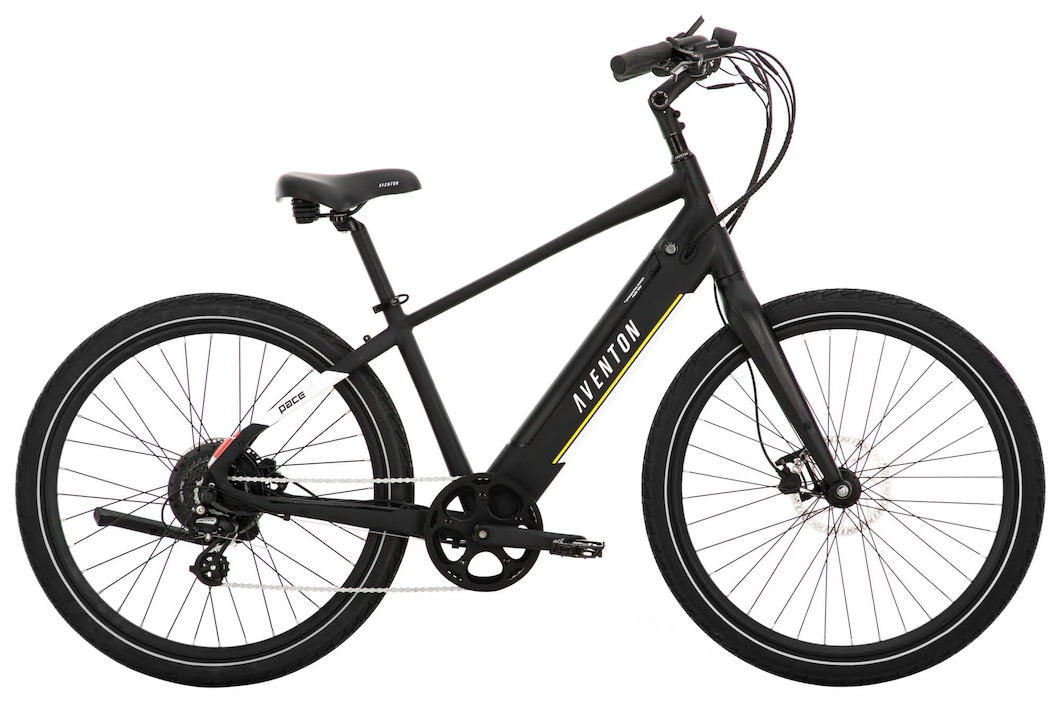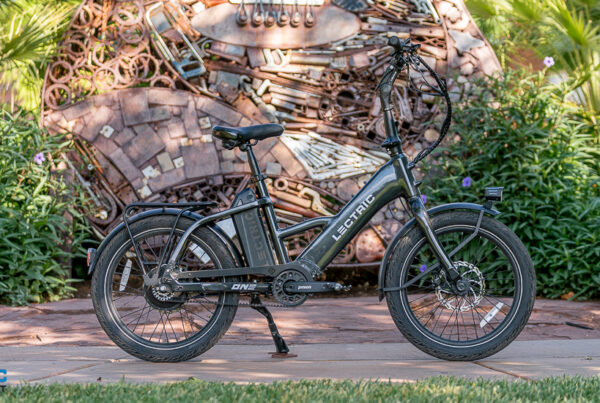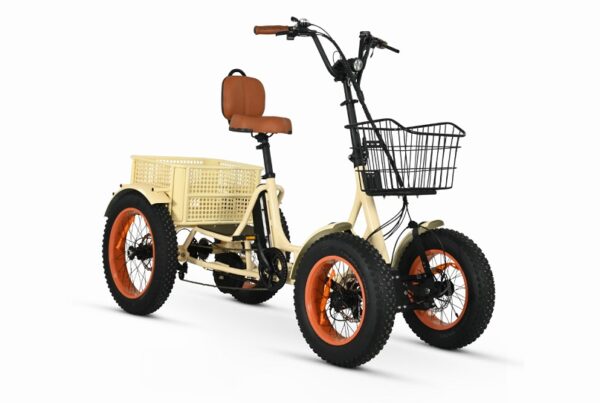Pace 500
We know the Aventon Pace 500 (technically, the 500.2) as a Class 2 e-bike with a 48V, 500W motor that can be unlocked to deliver riders to a maximum pedal-assist speed of 28 mph. This e-bike comes in both a traditional frame and a step-thru model and both frames come in two sizes, giving it an unusual ability to offer a comfortable fit to people across a wide range of stature.
The Pace 500 is spec’d with an 8-speed drivetrain, hydraulic disc brakes paired with 180mm rotors, an adjustable stem and a high-quality Selle Royal saddle. A front headlight and rear lights integrated into the frame come standard as well. Aventon also produces its own smartphone app that allows riders an unusual degree of control over the e-bike, like the ability to set how much assistance the rider receives at each PAS level.
It’s a no-frills e-bike in that Aventon chose not to include fenders and a rack. E-bikes in the $1500 price range where the Pace 500 competes that include fenders and a rack don’t include an 8-speed drivetrain. Its 614Wh battery is reported to offer riders a range of 40 mi., but in our own testing last year, we saw much better results, with the e-bike covering 58 mi. of riding to our testers.
Pace 500.3
As we said in our opening, Aventon had to look for ways to improve upon the existing Pace 500, but they did find opportunities. The 500.3 won’t look noticeably different, but that’s not to say it isn’t significantly improved.
The single biggest change is the addition of a torque sensor. And because this is a component that goes unseen, appreciating what it does demands some explanation. A torque sensor takes tiny measurements—often at a rate of 1000 times per second—of how much force a rider is putting into the pedals. Then, based on that data, the controller determines how much power the motor should put out based on the PAS level the rider has selected.
Practically speaking, what this does for the rider is the motor springs to life the moment a rider starts pedaling, which eliminates the pause that comes with a cadence sensor. Also, because the torque sensor delivers data to the controller continuously, the motor delivers power in proportion to the rider’s effort, so that when the rider goes harder, the motor adds in more power. The feeling is more organic, more super-hero-y and much less like a motor turned on.
Aventon estimates that riders will see a range of 60 mi. thanks to the switch to a torque sensor. As we mentioned, previously, Aventon estimated riders would see a range of 40 mi., but in our testing we achieved 51 mi. on a single charge. In other e-bikes that have switched from a cadence sensor to a torque sensor, we’ve seen more like a 30-percent gain, but because Aventon’s previous range estimate was so conservative, we think riders may see even more range than 60 mi.
Aventon has also upgraded the taillights to include turn signals to better communicate a rider’s intentions to anyone behind them.
Details like weight capacity, bike weight and brakes remain unchanged, as does the fit of the four frames. They did make one small change to the drivetrain, increasing the size of the chainring in the crankset from 46 teeth to 48t; the upshot is that a rider won’t have to pedal quite so hard to reach top speed.
Source link









